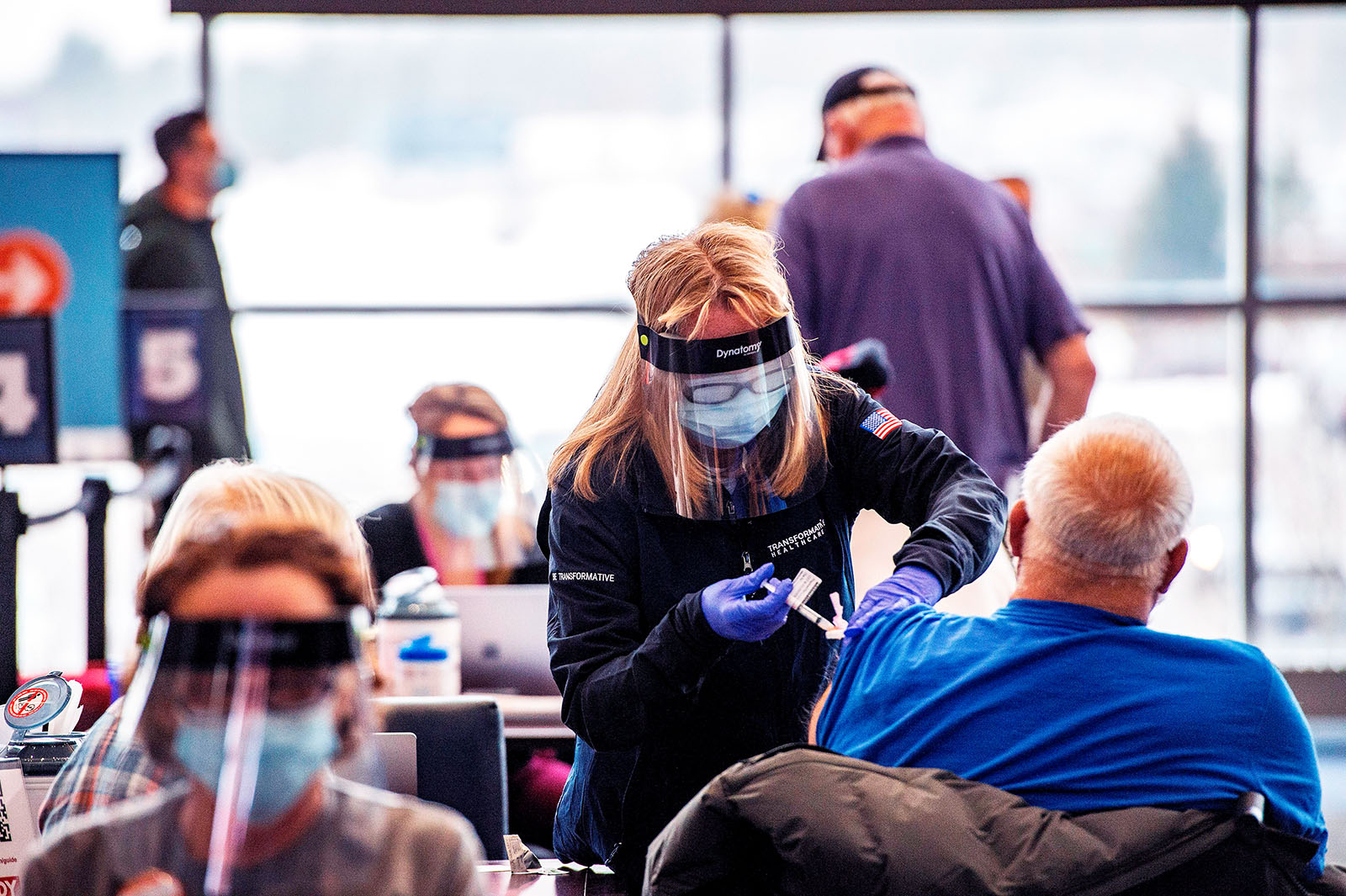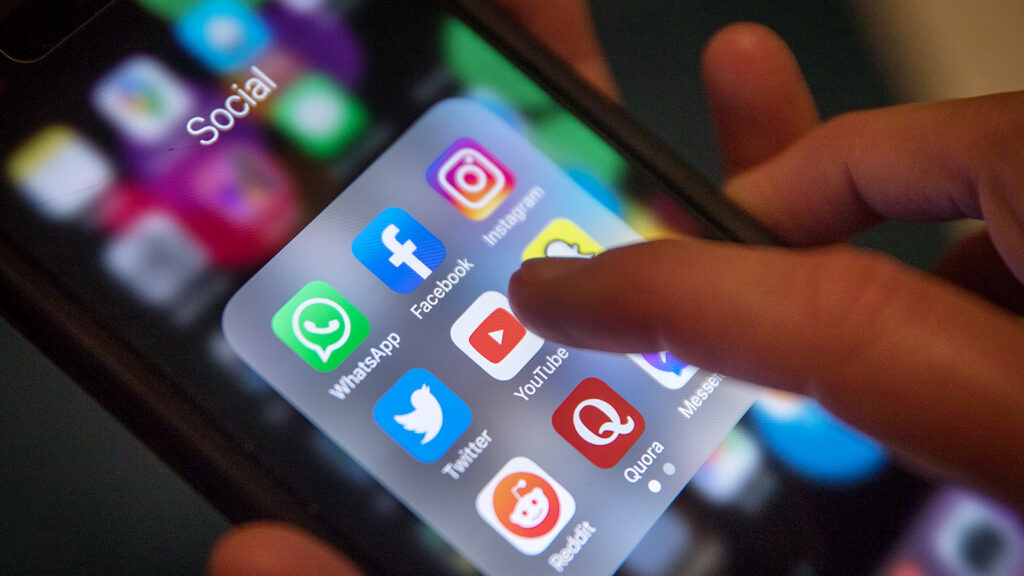What Can Employers Do to Encourage Vaccine Uptake?

Hundreds of people filled the floor as medical staff inoculate the public and first responders against Covid-19 at Gillette Stadium in Massachusetts. A lot of employers are exploring whether to make the COVID-19 vaccine mandatory.
Photo: Joseph Prezioso/AFP via Getty Images
As the COVID vaccines start to roll out, there is still considerable vaccine skepticism among certain segments of the population, and many others who are hesitant or nervous may end up not getting vaccinated.
So how do you persuade those people, and what can employers do to encourage the uptake of vaccines? Dr. Rupali Limaye is a health communication scientist at the Johns Hopkins Bloomberg School of Public Health who has researched ways of nudging people to improve their health outcomes.
LIMAYE: Pre-COVID, most people were pretty pro-vaccine, but likely needed some kind of a nudge to accept a vaccine, meaning they needed a recommendation from a health care provider or they needed to know that the disease was severe enough and that they are susceptible.
Reaching Those Who Are Unsure
Hardliners, those people who are fundamentally or philosophically opposed, are actually a very small proportion of the population here in the United States. However, what has changed is that COVID has brought this small population that was in the fringes to the forefront. And that’s because there’s so much misinformation.
We’re living in a time of uncertainty, so people are grasping for information to make sense of the world, and as it’s a novel pathogen, we’re learning new things about it every day. There’s also, unfortunately, in the United States, a perception that the vaccine development process might be tainted. And so you combine all these factors together, and this has essentially pushed more people into an unsure category.
BRINK: What are the best ways to nudge those in that unsure category?
LIMAYE: Firstly, we try to shift the focus onto the disease itself. Most people in the United States now know someone who either had COVID or died from COVID. So focusing on severity and susceptibility is important.
The second thing we’ve tried is making vaccination the default. So for example, someone comes into a doctor’s office who is due for a flu shot, and how they respond to the doctor can depend on how it is offered.
The doctor may say, “It’s influenza season, we’re going to offer you a flu shot. Would you like one?” Or you can shift the conversation slightly and make it the norm: “The majority of people get the flu shot; I’m going to get it ready for you.”
The Value of Motivational Interviewing
The third idea is something called motivational interviewing. It’s an approach that essentially helps patients come to a decision about their health, using their own type of underlying value, if you will.
So instead of a didactic conversation, like a doctor saying, “You should get the vaccine because of this,” it’s more of a shared approach, a discussion, using the motivations that underlie why a patient would get a vaccine to help them realize why it’s important.
Finally, there’s the option to mandate vaccines, where people have to comply. It’s a bit of a punitive approach, and I think most of us would shy away from it, because it causes a number of other issues related to trust in the health care system. But let me give you an example: Currently, I work at Johns Hopkins. If I want to continue to work there, I have to have an influenza shot. It doesn’t matter. Every year, I am required to get an influenza shot.
Doing a vaccine distribution program through the employer would be huge; it increases efficiency, it decreases inequity issues, and it’s really important.
A lot of the employers that I have spoken with are starting to explore this idea of whether to make the COVID-19 vaccine mandatory.
Offering Vaccines Through the Office
BRINK: Is there anything unique to an office setting where someone is an employee, as opposed to just being a member of the public?
LIMAYE: Absolutely. One thing that would really help people get vaccinated is to offer it at the employer level. Doing a distribution program through the employer would be huge; it increases efficiency, it decreases inequity issues, and it’s really important.
With regard to what employers can be doing, part of it is thinking about the occupational risks that their employees face. So if you’re an employer with people in separate offices and good ventilation and you’re able to test people every day, you are probably able to keep your population of employees relatively safe. If you own a factory where people are in close quarters and are sharing lots of common break rooms, et cetera, then you have more of an onus to protect your employees.
Now, is that through mandatory vaccination? Likely not. You can space employees apart as much as you can, stagger shifts and also allow for people to work at home and have more flexible policies related to telework, which has been quite an ongoing debate.
If we want to decrease risk of exposure, we have to figure out where we can allow people to have more flexible schedules so they’re least likely to be at risk.
Empathetic Messaging Matters
BRINK: One suggestion I’ve seen is that bombarding people continuously with messaging does make a difference. Is that the case?
LIMAYE: The more exposure that you get and the more you hit people over the head with a message is really important. However, that message needs to be salient, and it needs to have a call to action. So it can’t just be, “Get the vaccine.”
It could be an appeal such as, “The reason it’s so important for us to get the vaccine is not only to protect yourself, but think about your family and think about your loved ones.” Make the appeal slightly stronger. Along with, “Here’s information on how you can get your vaccine or schedule your vaccine shot today.”
The other piece that we need to think about in terms of giving the same messages over and over again is that people are quite fatigued at this point. We need to think about how we come at this with a more empathetic response, instead of a fear-mongering type of response.
BRINK: Are you confident that the messaging will get through?
LIMAYE: Hopeful is the word I would use. I am hopeful. I think at the beginning the vaccine rollout here in the States was a little bit tricky. There’s a lot of logistical issues, as you can imagine, but we can learn very quickly, and we’re able to apply those learnings moving forward.
I’m starting to hear from more health care providers that they’re now recommending the vaccine and personalizing that recommendation, which is critical for vaccine uptake.






